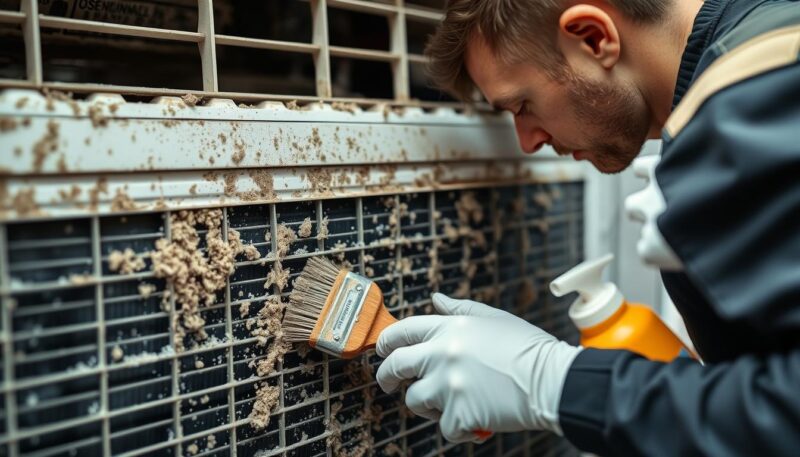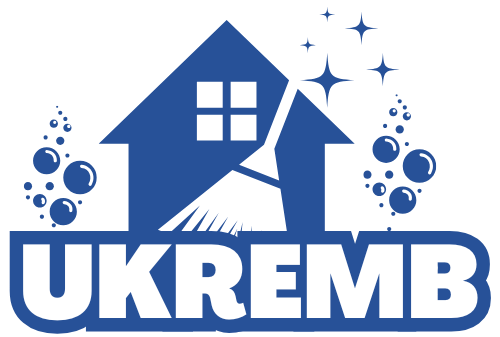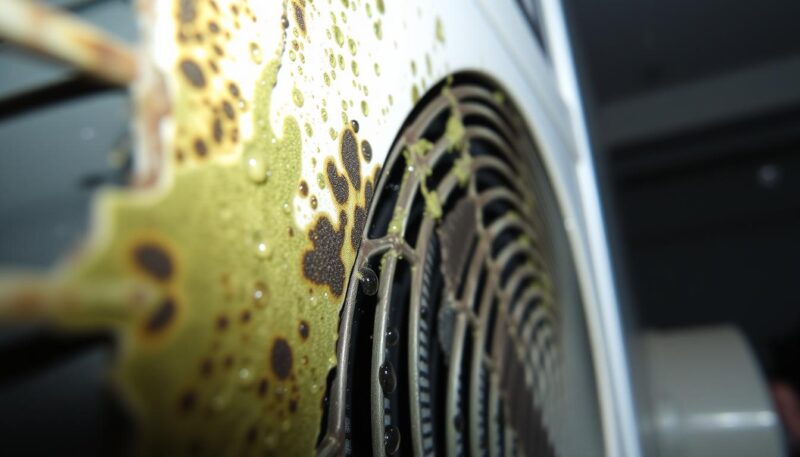If you’re experiencing a musty smell in your home or noticing an increase in allergy symptoms, it may be time to check your air conditioner for mold. Mold in air conditioners can significantly impact indoor air quality and can pose serious air conditioner health hazards for you and your family. These spores thrive in the warm, moist environments created by improperly maintained cooling units, making it essential to prioritize AC mold removal as part of your regular maintenance routine.
While the average lifespan of central air conditioning systems ranges from 10 to 20 years, black spots around air vents or unexpected respiratory issues can indicate the need for immediate attention to mold growth. Regular cleaning of the evaporator coil and replacement of air filters every month or two can keep mold at bay in your unit. Furthermore, maintaining an indoor relative humidity between 30 and 50 percent is recommended to prevent mold spores from proliferating.
Recognizing the signs of mold in your air conditioner can prevent long-term health issues for you and your loved ones. In the Wasatch Front region and beyond, it’s common for homeowners to face this issue. Prioritize your health and comfort by staying vigilant against the risks posed by neglected air conditioning systems.
Understanding the Causes and Signs of Mold in Air Conditioner
Understanding the factors that contribute to mold growth in air conditioners can empower you to take proactive measures. Mold can thrive in these systems due to specific environmental conditions such as excess humidity and insufficient airflow. When ac units are poorly maintained or have clogged filters, humidity can increase, creating perfect conditions for mold spores to take root.
Why Mold Thrives in Air Conditioning Units
The presence of moisture, food sources, and oxygen allows mold to flourish within air conditioning units. Common scenarios that facilitate this growth include:
- High humidity levels caused by improper sealing of the unit.
- Poor ventilation, which can trap moisture and lead to stagnant air.
- Clogged air filters, which hinder airflow and increase humidity.
- Condensation build-up within the unit, especially during warmer months.
Pervasive mold types, such as black mold (Stachybotrys chartarum), can be particularly hazardous. Identifying mold in air conditioners should include regular inspections to mitigate air conditioner health hazards.
Common Indicators of Mold Presence
Recognizing the signs of mold is crucial in preventing health risks associated with air conditioning systems. Common indicators include:
- Musty or damp odors while the system operates.
- Visible dark patches on air filters and evaporator coils.
- Mold growth in vents and air ducts.
- Increased allergy symptoms, such as sneezing and coughing when the AC is in use.
Paying attention to these symptoms can assist in identifying mold in air conditioners early, allowing for effective mold prevention in AC units.
| Indicator | Description |
|---|---|
| Musty Odors | Unpleasant smells emitted when the unit operates. |
| Visible Mold | Patches of various colors on filters and other components. |
| Increased Allergies | Worsening allergy symptoms when the AC is running. |
| Humidity Levels | Elevated moisture in indoor air, often sensed as a sticky feeling. |
Being vigilant in preventing mold in your air conditioning system can enhance your overall health and improve the unit’s longevity.
Steps to Identify Mold in Your Air Conditioner
Recognizing mold in your air conditioning system is crucial for maintaining optimal indoor air quality. Taking the right steps can help you catch any issues early, preventing health problems and system inefficiency. This section explores techniques for identifying mold in air conditioners and when to seek professional assistance.
Inspecting Your AC Unit for Signs of Mold
Begin your inspection by checking visible areas of your air conditioning unit. Look for:
- Black, green, or fuzzy stains on air filters and inside the unit.
- Signs of moisture around the condensate drain and evaporator coils.
- Discolored spots or patches around vents and ducts.
- A musty odor when the air conditioning is running.
Each of these indicators can signify a mold problem. Mold can thrive in environments with humidity, dust, and malfunctioning components. If you suspect mold, carry out immediate cleaning of moldy air conditioners to prevent further spread. Proper maintenance and monitoring can significantly reduce the chances of mold reappearing.
When to Call a Professional
While some types of mold can be removed through DIY cleaning, certain situations require professional intervention. Consider contacting an HVAC technician if:
- The mold is located in hard-to-reach areas or hidden parts of the system.
- You notice persistent musty odors even after cleaning.
- Mold appears to be growing rapidly or affects other areas of your home.
- Your air conditioner shows signs of reduced efficiency or airflow problems.
Professional cleaners are experienced in eliminating mold from cooling systems without damaging your unit. They possess the right tools to address deep-seated issues and can help improve the overall air quality in your home. Taking action quickly protects your family’s health and ensures your air conditioning system runs efficiently.

| Sign of Mold | Action to Take |
|---|---|
| Visible Mold | Proceed with cleaning; check surrounding areas. |
| Musty Odor | Inspect for hidden mold and consider professional help. |
| Reduced Airflow | Check and replace air filters; consult an HVAC technician. |
| Moisture Around Unit | Address leaks and conduct a thorough inspection. |
Conclusion
Mold in your air conditioner is not merely an inconvenience; it can lead to serious health hazards if not addressed promptly. Understanding the causes of mold growth, recognizing the signs, and being proactive in checking your AC unit are vital steps for maintaining a safe environment in your home. Remember that mold thrives in damp conditions, and maintaining indoor humidity at 50% is an effective strategy for mold prevention in AC systems.
To ensure the health of your indoor space, consider regular AC mold removal through professional maintenance, cleaning, and inspections. Implementing air purifiers with HEPA filters can significantly reduce mold spores, while utilizing activated charcoal aids in eliminating unpleasant odors associated with mold. If you detect signs of mold, including musty smells or visible growth, it’s critical to act fast to mitigate further spread and protect your health.
Incorporating innovative solutions like Hydrogen Peroxide Evaporation technology may enhance your home’s air quality and overall safety. By prioritizing regular checks and maintenance of your air conditioning system, you not only improve system performance but also safeguard against the detrimental effects of mold and its associated health risks. Keeping your air conditioner free from mold will allow you to enjoy fresh, clean air and a healthier living space.

